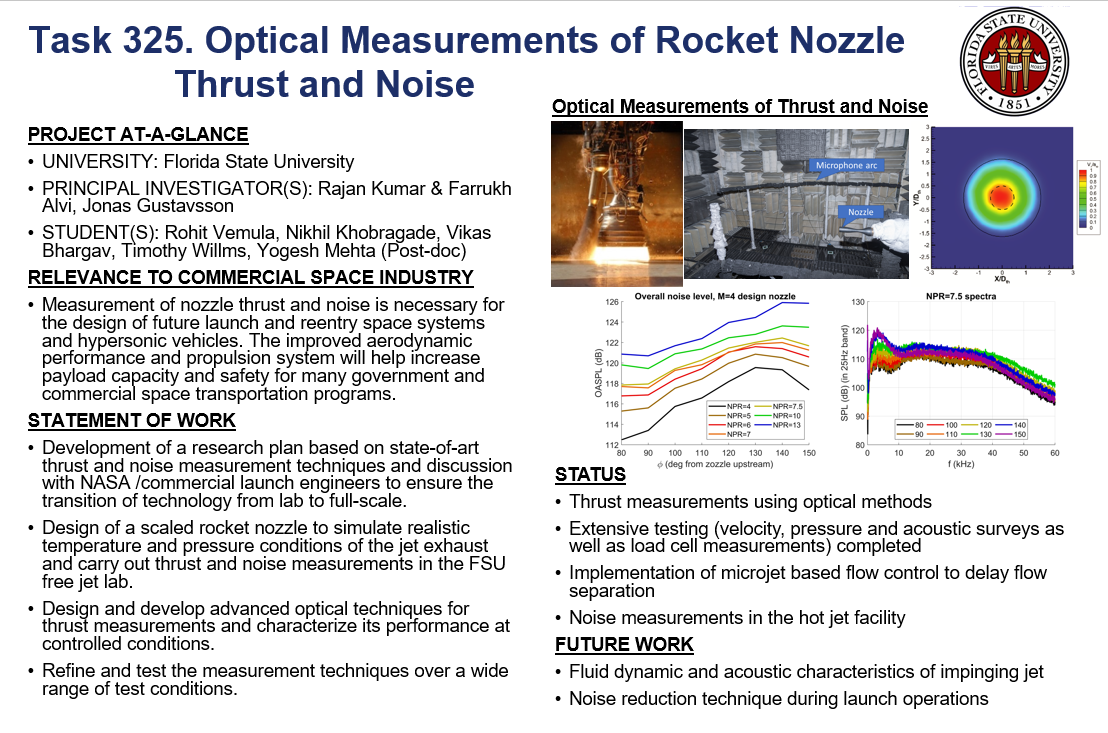325. Optical Measurements of Rocket Nozzle Thrust and Noise
Team
| Name | Role | Primary |
| Rajan Kumar | Principal Investigator | ● |
| Nick Demidovich | Tech Monitor | ● |
| Yolanda Lopez | Fiscal Admin | ● |
Project Description
The high-temperature, high-speed exhaust from the propulsion systems of commercial systems, such as the SpaceX Falcon vehicles, impinges on the launch pad surface (see Space X, Merlin Engine in figure). This results in very high unsteady pressure loads and extremely high fluctuating thermal loads in the vicinity of the impingement region which leads to structural vibrations that can compromise efficiency and operational safety. The aeroacoustic loads due to rocket plume impingement and vehicle leading edge and boat-tail interactions will be experimentally examined in our jet, rocket and aerodynamic facilities. We will develop, test and refine promising Active, Passive and Hybrid flow control methods. Based on our results we will identify the most promising method(s) in light of: flow unsteadiness reduction efficacy and full-scale implementation practicality.
Project Outcomes
- In year 1 the focus will be on developing a research plan based on state-of-art active flow control techniques and discussion with NASA scientists and commercial launch engineers to ensure the smooth transition of technology from laboratory to full-scale implementation.
- Design and develop steady and pulsed microjet based control system and characterize its performance at controlled conditions.
- Design of a scaled rocket nozzle to simulate realistic temperature and pressure conditions of the jet exhaust and carry out thrust and noise measurements in the FSU hot jet lab.
- In the subsequent years, the control system will be refined and tested over a wide range of test conditions. A feedback control loop will be designed and implemented for optimal performance.
- Develop scaling laws and system integration studies for large scale implementation.
Summary of Output
The proposed research will be very useful for the design of future launch and reentry space systems and hypersonic vehicles. The improved aerodynamic performance and propulsion system will help increase payload capacity and safety for many government and commercial space transportation programs.
Quad Chart
